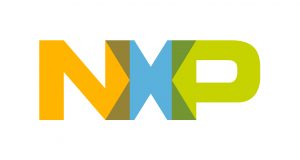Choose the right smart card for your organisation
Introduce smart card technology into your organisation as a great way to improve certain situations. Whether it’s security, closed circuit payments or enhanced identification, smart cards provide an effective solution.
 But before going into details, let’s take a look at what smart cards are and how they work. In short: Smart cards are similar to regular PVC cards, but in between the layers of PVC, a RFID chip is placed along with a tiny antenna. The chip holds all kinds of information, but does not rely on an internal battery to function. Instead, the chip powers by the radio frequency of the device that reads the card, also known as “reader”.
But before going into details, let’s take a look at what smart cards are and how they work. In short: Smart cards are similar to regular PVC cards, but in between the layers of PVC, a RFID chip is placed along with a tiny antenna. The chip holds all kinds of information, but does not rely on an internal battery to function. Instead, the chip powers by the radio frequency of the device that reads the card, also known as “reader”.
This technology has many advantages over conventional chip-cards or barcodes. We list the most important ones that might apply to you:
- Checking credentials is automated, securely and much faster than any conventional way of verification.
- More data stores in the chip compared to what is printed on the card.
- Falsifying information is more difficult.
- Cards read at greater distances compared to scanning a barcode.
- No physical contact between the contactless smart card and the card reader is required in order to obtain the information.
Now that we have an idea of what smart cards are, we dive in a bit deeper, and look at the different type of smart cards. With the years, smart cards are fitted with more advanced, secure chips that hold increasingly more data. However, that does not mean that the older cards are immediately obsolete. We often use three common types of smart cards in our projects:
MIFARE Classic
This card is primarily intended for storage of data. Because of the relatively simple way the data is secured, this standard is generally considered the least secure. It applies most commonly to public transport systems where little to no sensitive personal information is stored on the actual card. Cards generally hold 1 Kilobyte, or 1024 Bytes of information, which is usually enough for text or binary data.
MIFARE Plus
The “Plus” version is an enhanced version of the “Classic” standard. It is designed for enhanced security, and therefore is used to store more sensitive personal information of the card holder. The card holds up to 4 Kilobyte, or 1024 Bytes of information, and is a bit more expensive compared to the “Classic” cards.
MIFARE DESfire
The third MIFARE standard is DESfire. This standard takes a completely different approach to security compared to the previous two, and is considered the most secure smart card at the moment. Instead of simply writing information to the card, the user defines “Applications” which each hold their own security information. By providing the keys to these applications to 3rd parties, it is possible to create a single card used for different systems whether it’s security, payment or identification.
 All three cards are developed and produced by a single manufacturer: NXP. This company is on the frontier of RFID chips, and improve their offering by improving security, storage and ease of use.
All three cards are developed and produced by a single manufacturer: NXP. This company is on the frontier of RFID chips, and improve their offering by improving security, storage and ease of use.
While MIFARE Classic cards are the least expensive, they offer enough functionality and security for small and mid-size organisations who want to automate building access, payments or identification of their staff, members or visitors.
For larger organisations with a greater demand for security and applications of the card, MIFARE DESfire is the best choice.
EXTRA: MIFARE Ultralight
If you do some research, you may read about another standard: MIFARE Ultralight. This variant of MIFARE Classic features no encryption, and stores just 64 Bytes of data. While this may be enough for some applications, it’s more often for “disposable” cards such as tickets to events.

 Nederlands
Nederlands